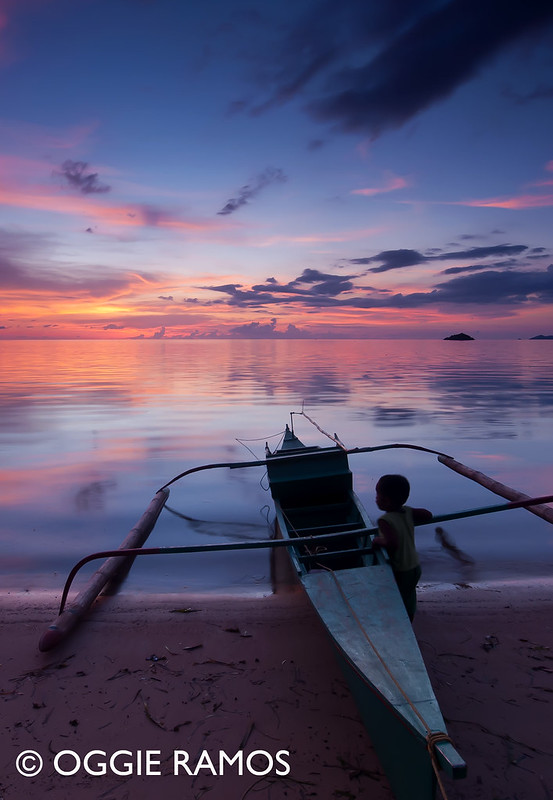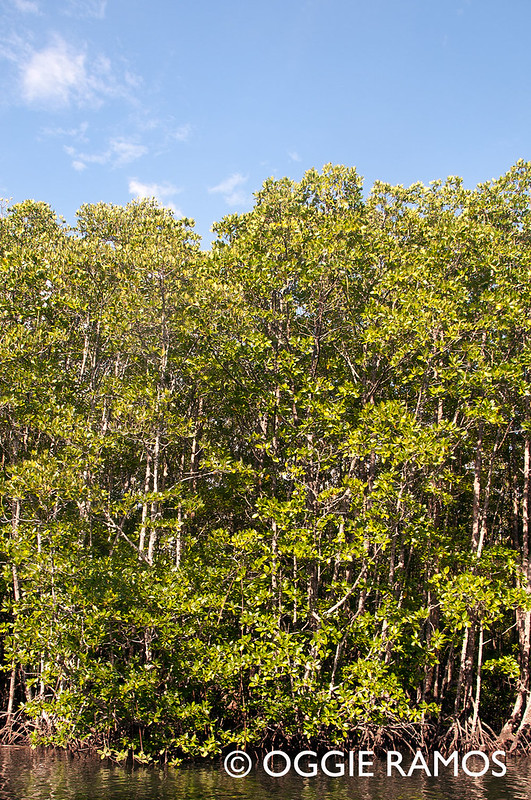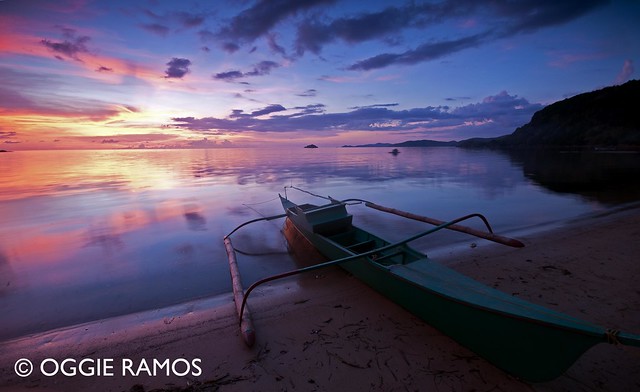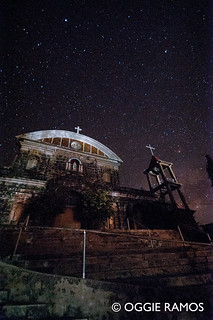 |
| Lele Sunset Boy |
Tourism guide, Hermie Villanueva, however, was honest enough to admit that Balanga is now a shadow of its old self as seen in pictures a few years old, its lushness supplanted by varied personal interests. The falls, owing to the summer season, is now dry. Sure appreciate the honesty as some guides are wont to take you places regardless of the current conditions just to earn their fees. Besides, we only have the rest of the day to go around so we'd like to make the most of it not by cramming the hours with destination after destination but to head only to one or two and savor the moment. On Hermie's recommendation, we opted to go to the mangrove forest of Kabulihan instead.
 |
| Sailing through the three-kilometer stretch of mangroves in Kabulihan |
Reaching the mouth of the river in Kabulihan, we chanced upon a family waiting for a vehicle to transport their nipa roofing. Since we didn't have arranged banca transport and while there were several bancas lying around with their owners nowhere in sight, we took a chance and asked if they would be so kind as to give us a quick tour of the mangrove forest. Owing to the kindness of the Culion locals, we weren't surprised they readily agreed, only requesting for fuel in return.
There was little wind to break the mirror-like quality of the river as we meandered through a three kilometer stretch of varying degrees of lushness. On the narrower portions of the river, I got the impression of being pleasantly walled-in by mangroves, some reaching upwards of probably 30-35 feet. If we came during the sunset hour, the forest would likely be filled with birdsong but for now, we sailed in the quiet afternoon, the peace only broken by the engine's steady throbbing and the occasional trilling of a bird high up some hidden branch. We can only see very few visible signs of settlements along the banks.
 |
| Kabulihan Lushness |
Sailing back to the starting point, I cannot help but remember a similar experience, paddling by myself on a banca from Iwahig to Honda Bay then back, in Puerto Princesa a few years ago on a photo assignment for a magazine. This waterway would be a great place to do the same or better yet use a kayak, I told Hermie, though that remains a dream for now (kayaks are expensive, tourists' numbers are still small). At night, this becomes a destination for a firefly tour, same as in Iwahig where the trees are lit by thousands of fireflies like a forest of Christmas trees. Now, that's something worth coming back for.
 |
| Beautiful desolation in Lele |
Traveling in the darkness on a moonless night, the silhouettes of the terrain are barely visible. But the stars shine bright, a glimpse of the cosmos draping over the province like a kilometric planetarium free of charge for all to see, a truly heavenly sight maybe only a few really appreciate nowadays.
Attribution: Facts and figures culled from the Palawan Council on Sustainable Development website. To read more, click this link.
Info: Tourism
guide Pastor Hermie Villanueva conducts walking tours of Culion town as
well as trips elsewhere on the island; contact him at mobile:
0921-3947106
 Read my other Culion chronicles here by clicking these links:
• A Morning at the Museum, Reframing the Past and Putting Into Words Things Largely Unspoken
Read my other Culion chronicles here by clicking these links:
• A Morning at the Museum, Reframing the Past and Putting Into Words Things Largely Unspoken
